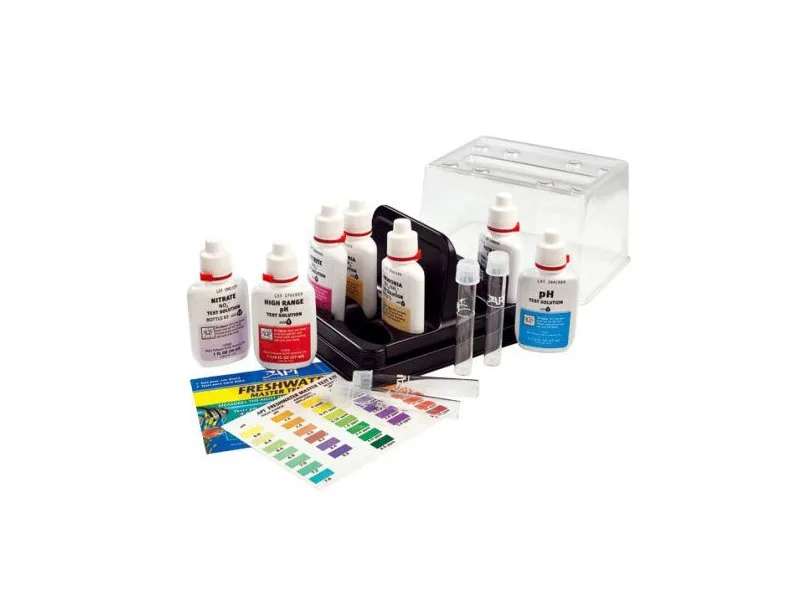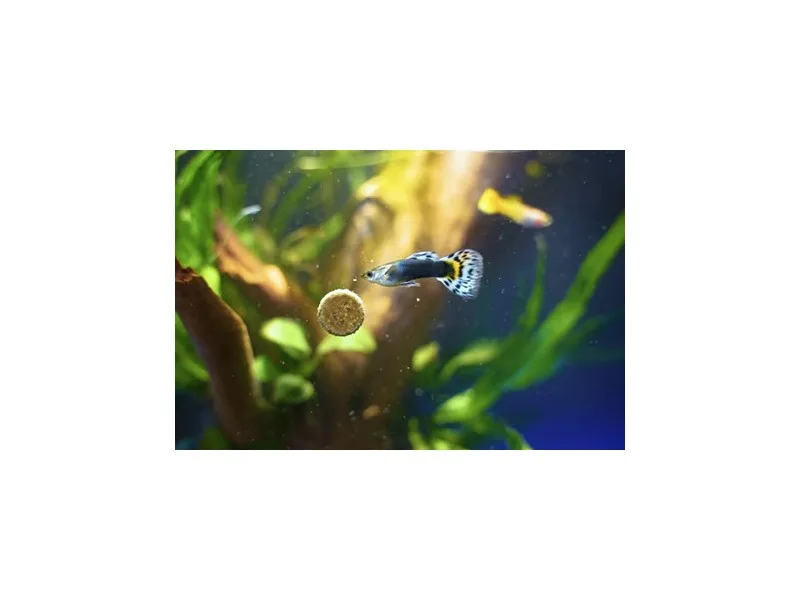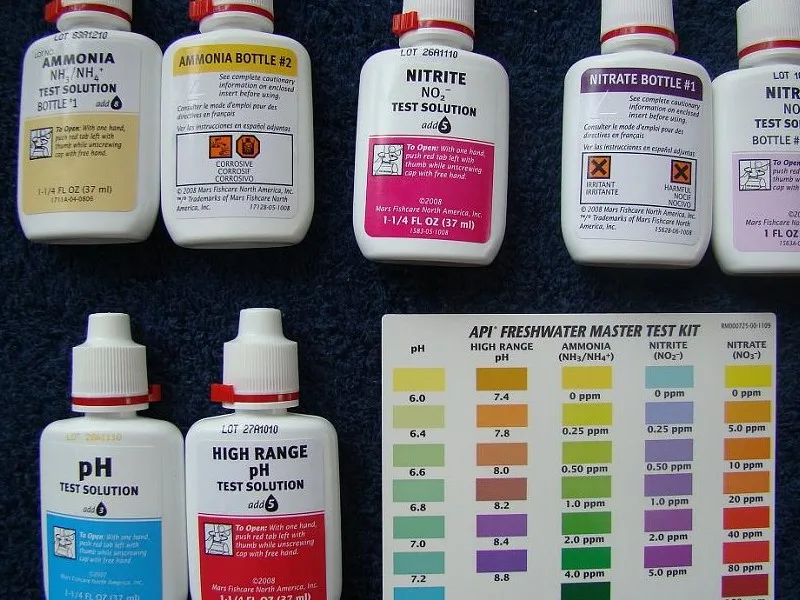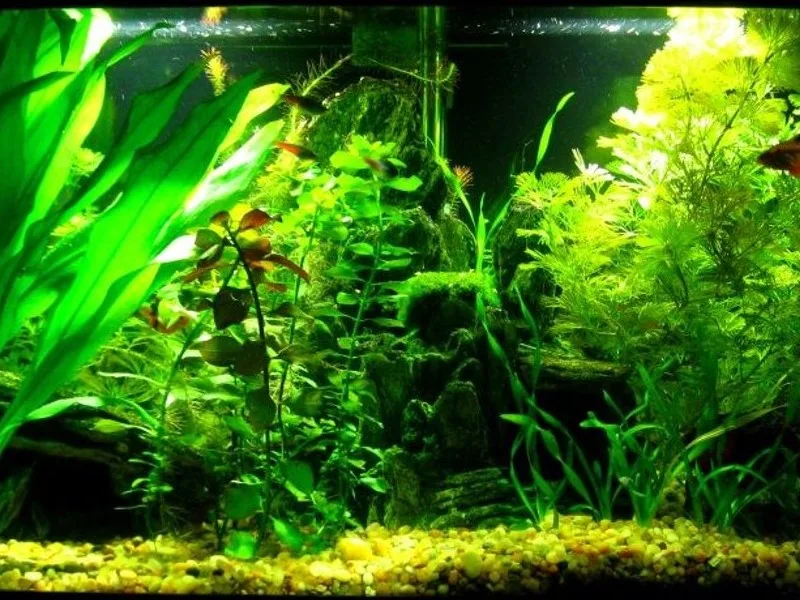Understanding GH and KH levels in a fish tank
Maintaining good water quality is key for the well-being of your fish, and here water chemistry comes into the picture. In this regard, two parameters need attention and these are GH (General Hardness) and KH (Carbonate Hardness). GH covers the Ca+ and Mg+ ions in the water, whereas KH is responsible for indicating the degree of resistance of the water to the changes in pH. Realize how much importance actually lies in measuring GH and KH in your water sufficiently for your fish health.
Regular monitoring of proper GH and KH level sis a necessary process as they directly influence the general health and lifestyles of fish in aquariums. Some fish possess unique patterns of hardwater needs, and whenever these ideal values are exceeded or fallen, the stress or loss of species health or even death is anticipated. GH and KH influence multiple processes such as growth and reproduction of fish, abilities of their immune system, which become weaker or stronger, depending on levels. Consequently, vigilance and fine tuning of water parameters are now the most critical aspects of taking care of your fish.

Why is it important to lower GH and KH? – GH and KH levels
Occasionally, your GH and KH levels may diverge from the “ideal” range for the particular fish species in your tank. It might turn out to be a source of anxiety since over dosage of GH and KH has a multiplying effect. For example, an increased GH causes the growth of calcareous scales on the surface of the tank, metal parts and even gills of the fish. This can also damage their breathing function, making it harder for them to breathe properly, and causing respiratory problems. In addition, high KH values might jeopardize the pH stability, and as a result it would be a real chore to set and maintain pH conditions suitable for the fish.
Reducing the GH and KH values to ensure they do not become greater than the usual range for your fish species may even become inevitable. By cutting down these criteria, you can make a more appropriate atmosphere that stimulate the survival of aquatic pet. Additionally, soft water, which is indicated by lower GH and KH levels, can also benefit tanks that host fish species that are adapted to such water with more acidity. Although it is worthwhile to indicate the fact that different fish species have varying water hardness thresholds, it is vital to determine the exact requirements of the fish prior to acting.
Testing the GH and KH levels in your fish tank – GH and KH levels
To start a procedure of reducing the GH and KH levels in your fish tank, you have to measure these parameters accurately and monitor them closely. Such testing kits as for GH and KH determination can be easily purchased in pet stores and through the web. Such kits normally include water testing solutions and color charts to make the task of analyzing the level of minerals and carbonate hardness in water easy.
Testing GH levels will be done by filling a test tube with water from your fish tank, and then adding the provided testing solution. Agitate the tube gently and observe the color change. Contrast the resulted color with the chart given with the testing kit so as to decode the GH level of your water. The next step is also to test the KH levels which involves following the instructions provided in the testing kit. The kit usually requires adding drops of testing solution to a sample of your tank water and comparing the resulting color change to a chart.
Testing GH and KH levels on a regular basis will give you the opportunity to observe any variation and then make the adjustments needed to maintain the optimal water chemistry for your fish. It is advisable checking for these values at least monthly, or more often if you notice any signs of stress or sickness in your fish.
Natural ways to lower GH and KH in your fish tank – GH and KH levels
In case you notice that the GH and KH levels in your aquarium are low than the ideal range of your particular type of fish, there are natural methods that you can use in order to adjust them. It has to be mentioned that chemical additives are capable of achieving significant results rather faster than the natural methods. On the other hand, however, they use a more gradual and sustainable method for adjustment of acidity in water.
RO or DI is the most influential natural way to decrease the GH and KH values. These filtration techniques are capable of removing all the minerals and most of the impurities, thus making the water softer with a lower pH level. On the other hand, you either get RO or DI water from a trusted supplier or sink a penny in a home water filtration system. Totally RO or DI water devoid of minerals is bad for your fish, therefore, should be not used without prior minerals remineralization.
Besides, natural method to decrease GH and KH can be brought in by mimicking nature and adding driftwood and peat moss to your fish tank. Both dead wood and peat moss leach organic acids and tannins into water reducing pH and softening water. Pre-soaking those driftwood and rinsing the peat moss will aid in the prevention of excess tannins release that causes and the water discoloration. Such natural elements lower GH and KH as well as give your fish hiding places and thus create a natural aesthetic.

Using chemical additives to adjust GH and KH levels – GH and KH levels
In other cases, organic methods do not prove to be useful in obtaining the right GH and KH levels for your fish. For example, you can apply certain additives that have already been devised to mitigate hardness of water. These adjuvants are accessible in a pet shop and come as powders, liquids, or tablets. It is crucial to stringently follow the specified instructions of the manufacturer using chemical mixtures to make sure of their safe and proper application.
Some of the most commonly used buffer chemicals to decrease GH and KH are the acidic ones. Acid buffer helps to carry out a reaction with the minerals in the water which ensures the reduction or GH and KH. Acid buffer should be checked closely to ensure that its pH levels do not drop too quickly, which can be a stressful overload for your aquatic creatures. It is suggested not to make big dramatic adjustments but rather to lower the GH and KH progressively over time keeping the pH stable.
On the other hand, peat can be a good additive to minimize GH and KH. Peat extract is from the natural peat moss, and these organic acids are known to soften the water and reduce the pH of it. It is commonly found in liquid solution and you can simply pour it to your fish tank. As the case with other chemical additives, do follow the manufactures’ instructions and water parameters closely to obtain the desired result or avoid unwanted harm to your fish.
Maintaining stable GH and KH levels in your fish tank- GH and KH levels
Having succeeded in basing the GH and KH level in the fish tank, stable environment now would be a thing you should also consider for your fish. Changes of water quality will cause stress to your resident waterlife and in the long run they will be affected negatively. To ensure long-term stability, it is important to check GH, KH, as well as pH every now and then and immediately change the values that are found to be unsuitable.
Consistent water changing is one of the key factors for stabilizing GH (General Hardness) and KH (Carbonate Hardness) parameters. While water changes are encouraged, using water that mimics your tank water in parameters is recommended to avoid any sharp contrasts. Abrupt changes of the chemical system may be bad for fish, that is why it is a must to adjust the new water to the level of temperature, pH and hardness of the water in your aquarium. Ideal changes are usually excruciating to marine life but will eventually result in a balanced environment.
Also, along with water modifications, do not allow significant change in Ca and Mg levels. Slower transition helps you avoid such drastic changes, which usually result in stressful situations. Observing the behaviour of your fish and assessing their health periodically you can, as well, bring about a lot regarding the stability of the aquarium environment. The precaution that stress or any illness should be treated immediately to avoid complications higher.
Common mistakes to avoid when lowering GH and KH – GH and KH levels
Alongside the decrease in GH and KH rates that during your tank water, it is essential to take into consideration the possible errors. Not committing these blunders will assist reach the place where the fish will not be subjected to stress, unnecessary hurt, or other harms.
The most common error is that of embedded into this stabilization range. It is stated earlier that the fluctuation process should be implemented slowly so that just as the fish adapt better to it equally the environment becomes stabilized. Dramatic transformations sometimes create tension; this ultimately may lead to health problems.
The other mistake is that you don’t whenever the species that you have chosen needs something in particular . Every fish species has its own hardness of water tolerance; hence you must have specific limited ranges for the particular species of fish that you plant. While adjusting GH and KH levels to suit the requirements of your fish might be necessary their health and even life could be negatively affected if it is done wrongly and without considering their needs.
Farming in the end also, which is merely chemical additives without taking into account the natural ways can be a mistake. Providing the ability for natural methods to better adjust water chemistry as well as maintain a healthy habitat for the fish are just a few benefits the natural approach may provide. Chemical additives, intended to be employed as an end resort if natural methods fail.
Monitoring and adjusting GH and KH levels over time -GH and KH levels
GH and KH level adjustments are what you need as you regularly monitor them to maintain the much required stability in your tank. Frequently testing the water parameters, particularly the GH and KH, will allow you to detect flaws that may occur and react after that. The water quality parameters should be checked once a month at least or even more frequently by the fishkeeper, if he/she discover any sign of stress or illness in his/ her fish.
Should KH and GH fall short of or exceed target values, it is time to initiate measures to gradually bring them back to normal. Follow the instructions the manufacturers give out when using chemical additives and monitor the water parameters closely to ensure you are achieving the desired results without harming other fish living in that tank.
Other factors to consider in fish tank water chemistry – GH and KH levels
GH and KH though are the influencing chemical components in the water chemistry, more factors can still determine if your fish and other dwellers are thriving well. All of the above plays a crucial role, and it is necessary to be aware of this and to make corrections accordingly so that to ensure the optimum comfort for your aquarium buddies.
pH level is an example of a parameter that could very well make a difference for the fish health. Each of fish types has pH specific demand, and sustaining the proper pH level is critical for the health of all fish species. Setting the pH level with the use of test kits and dissolving aquarium salts in necessary amounts will maintain the balance required for the wellbeing of your fish.
Water temperature is also another factor to keep in mind in selecting the appropriate fishing gear. For fishes, virtually all species need a temperature they consider ideal; therefore, even small deviations from the norm can bring about stress and health problems. A stable aquarium heater and thermometer to sustain a constant and fit temperature for your fish, is attained by employing a reliable heater.
Water quality as well as water chemistry are the vital points in fish tank equation. Chemical pollutants like ammonia and nitrates can be for the survival of fish and runs a risk to their health. Performing water check-ups regularly using test kits for the presence of these pollutants will always ensure effective filtration and quality water circulation that are vital to the good health of aquatic life.

Conclusion- GH and KH levels
Understanding and practicing the principles of water chemistry is the key factor for producing a living space that provides the necessary conditions for the academic achievement of your fish. The comprehension of GH and KH significance is crucial, testing and monitoring these parameters, and the instatement of changes that are needed are necessary to keep good water chemistry. For instance, let’s say you choose natural methods of doing this, for instance, by using reverse osmosis water and incorporating driftwood and peat moss, you will have a kind sustainable way to manage GH and KH levels. Adding chemicals can step in for natural methods when they fall short in their job and one needs to be fully hands on. Instructions and monitoring of water parameters are thus important. Maintaining a consistent level of GH and KH together. Moreover, don’t forget to consider other factors like pH, temperature, and water quality to further create a helpful environment for your invertebrate pets.Happy fishkeeping!
